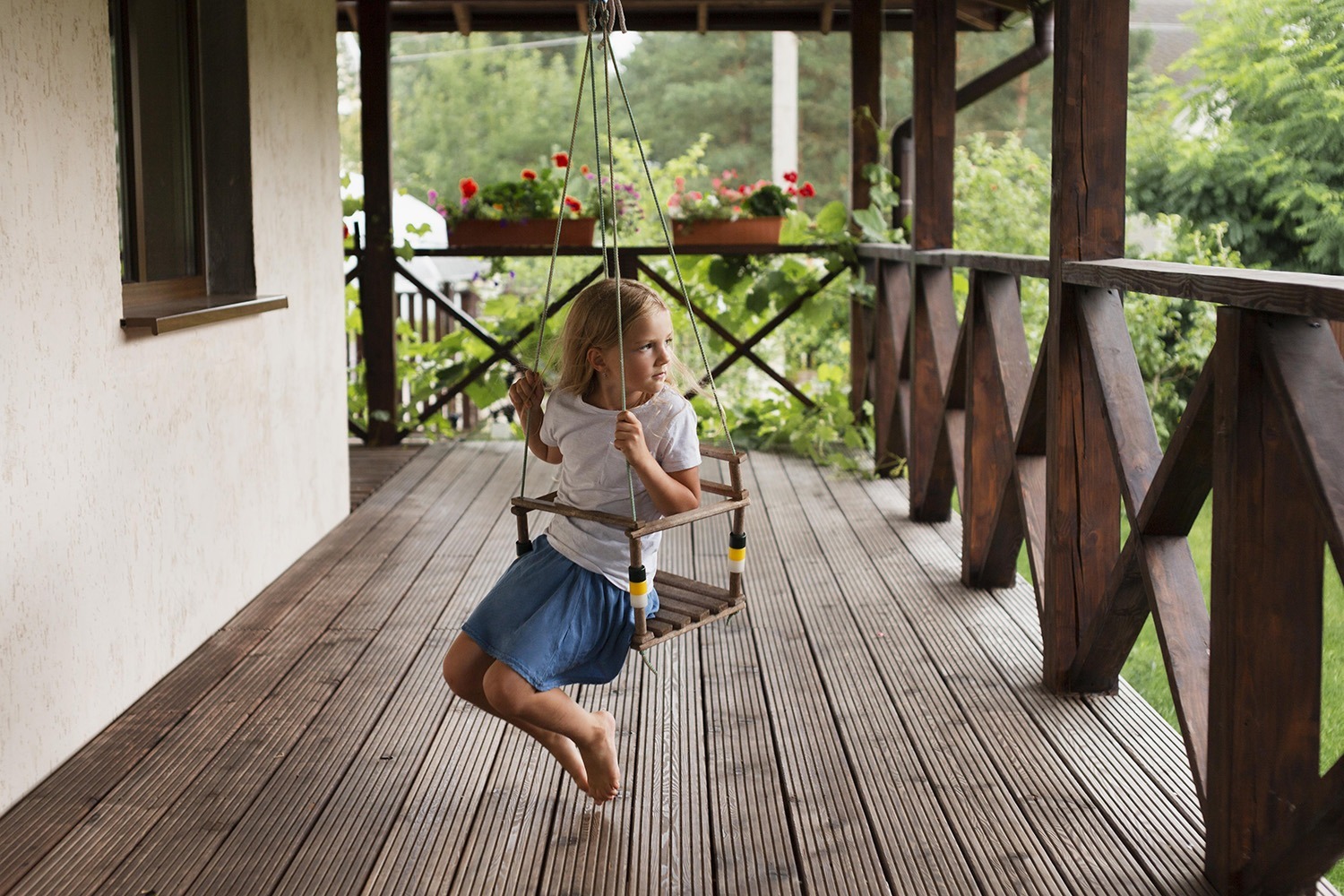17 Must-Know Safety Fixes for Aging Decks

Table of Contents
An aging deck can pose serious safety hazards if left unattended. Over time, exposure to the elements, structural wear, and lack of proper maintenance can compromise the integrity of your deck. If you’re a homeowner with an older deck, it’s important to take proactive steps to ensure its safety. Whether you’re planning to extend the life of your deck or prepare it for a deck inspection under California’s SB 326 or SB 721 inspection laws, this guide will provide valuable insights. Here are 17 ways to make your old deck safe, functional, and up to code.
1. How Can You Identify Structural Weaknesses?
Start by performing a visual inspection of your deck. Look for signs of deterioration like cracks, splits, and water damage. Checking for loose or corroded fasteners, rusted hardware, or damaged beams can help you identify areas in need of repair. A professional balcony inspection report can provide a detailed assessment of the structural integrity.
Tip: Schedule a professional deck inspection to thoroughly evaluate the health of your deck, particularly if it hasn’t been inspected in a while.
2. Are the Railings Sturdy Enough?
Loose or damaged railings are a major safety risk, especially for elevated decks. Inspect the railings to ensure they meet the required height and load-bearing standards as per California building codes. Railings should be at least 42 inches high for residential properties, and they must be able to support at least 200 pounds of force.
Tip: Tighten any loose bolts or screws and replace any sections of the railing that show signs of damage or instability.
3. How Should You Check for Rotting Wood?
Wood rot is a common issue for older decks, especially those exposed to moisture. Soft spots, discoloration, or fungal growth are signs that the wood may be rotting. Addressing rotting wood early can prevent structural failures and avoid costly repairs later.
Tip: Replace any rotting boards immediately, and treat surrounding wood with a preservative to prevent future rot.
4. Is Your Deck Properly Sealed and Waterproofed?
Water damage is one of the biggest threats to deck safety. If your deck’s sealant has worn off, it’s vulnerable to moisture, which can lead to rot and mold growth. Regularly sealing and waterproofing the wood can help prolong its life.
Tip: Choose a high-quality sealant that’s specifically designed for outdoor wooden structures to protect your deck from the elements.
5. Can You Prevent Slips and Falls on Your Deck?
Old decks can become slippery, especially after rain or if moss and algae have accumulated. Non-slip coatings can significantly reduce the risk of slips and falls, making the deck safer for everyday use.
Tip: Pressure-wash the deck to remove buildup, and consider applying a non-slip coating or traction strips to high-traffic areas.
6. How Can You Reinforce the Deck’s Support Posts?
Support posts are critical for the stability of your deck. Over time, these posts may become loose or shift due to soil movement, or they may develop cracks and rot. Ensuring they are properly secured is key to maintaining deck safety.
Tip: Inspect the base of each post for signs of wear or rot, and replace any unstable posts. For added stability, consider installing additional bracing.
7. Are There Any Signs of Insect Infestation?
Termites and other wood-boring insects can significantly weaken the structural components of your deck. Look for small holes in the wood, frass (sawdust-like material), or hollow-sounding wood, which can indicate an infestation.
Tip: If you suspect an infestation, contact a pest control specialist to treat the area. You may also need to replace affected wood.
8. How Can You Address Sinking or Uneven Areas?
If parts of your deck feel uneven or are sinking, the foundation or footings may be compromised. This could be due to soil erosion or improper installation.
Tip: You may need to add new footings or reinforce the existing ones to stabilize the deck. Consult a professional if you’re unsure of the severity of the issue.
9. Are the Fasteners in Good Condition?
Fasteners such as screws, nails, and brackets can loosen or corrode over time, weakening the deck’s structure. Regularly check these components and tighten or replace any that are damaged.
Tip: Opt for corrosion-resistant fasteners, such as stainless steel or coated screws, which are designed to withstand outdoor conditions.
10. Should You Replace Aging Deck Boards?
Even if the structural components of your deck are in good shape, aging deck boards can become cracked, splintered, or warped. Replacing worn-out boards can greatly enhance both the safety and aesthetics of your deck.
Tip: When replacing boards, consider using pressure-treated wood or composite materials, which offer greater durability and resistance to the elements.
Contact DrBalcony for a professional inspection!
Ensure the safety of your balcony and living space with DrBalcony - We're a Tech Engineering firm that specializes in California SB326 & SB721 balcony inspections. Over 300+ completed projects in California.
Request A Free EstimateClick To Call11. How Can You Ensure Adequate Drainage?
Proper drainage is essential to prevent water from pooling on the deck’s surface or around its base. Water buildup can lead to wood rot and compromise the structural integrity of the deck.
Tip: Check for areas where water accumulates and adjust the slope or install drainage systems to direct water away from the deck.
12. Are There Cracks in the Deck?
Small cracks in deck boards can quickly turn into larger problems if left unaddressed. These cracks not only weaken the structure but can also cause tripping hazards.
Tip: Fill minor cracks with wood filler or caulk to prevent them from expanding. For larger cracks, replace the damaged board.
13. How Should You Inspect the Stairs?
Stair safety is paramount for any elevated deck. Check for loose or damaged steps, wobbly railings, and missing fasteners.
Tip: Ensure that all stairs are level and secure, and that handrails meet local building codes for height and strength.
14. Can Lighting Improve Deck Safety?
Poor lighting on your deck can increase the risk of trips and falls, especially in the evening or at night. Proper lighting is key to ensuring that the deck is safe to use at all hours.
Tip: Install motion-sensor or low-voltage lighting along pathways, stairs, and entry points to improve visibility.
15. Are the Beams and Joists Structurally Sound?
Beams and joists form the backbone of your deck’s support system. Over time, they can sag, rot, or weaken due to moisture or insect damage.
Tip: Have a professional inspect these components as part of a balcony inspection report to ensure they meet safety standards.
By addressing these 17 safety measures, you can extend the life of your old deck while ensuring it meets safety standards. Whether you need minor repairs or a complete overhaul, DrBalcony is here to help. As a trusted expert in deck and balcony inspections, we offer FREE estimates, FREE consultations, and FREE proposals to guide you through every step of the process. Contact us today to make sure your deck is safe, secure, and up to code.
Contact DrBalcony for a professional inspection!
Ensure the safety of your balcony and living space with DrBalcony - We're a Tech Engineering firm that specializes in California SB326 & SB721 balcony inspections. Over 300+ completed projects in California.
Request A Free EstimateClick To CallFAQ Section: Top Questions & Answers
My property is well-maintained. Do I really need SB-326/SB-721 inspections?
YES! Even with excellent maintenance, hidden issues can develop due to construction errors, material flaws, or severe weather exposure. Inspections are about ensuring those don’t turn into major problems.
Our balconies were inspected a few years ago – isn't that enough?
Unfortunately, no. California laws mandate inspections on a set schedule, often every 6 years. Deterioration can happen quickly, making regular assessments essential.
Can I use my regular handyman for the balcony inspection?
It’s not recommended. Unless they hold specific licenses (architect, structural engineer, etc.) their inspection won’t be considered valid for SB-326/SB-721 compliance.
What if the inspection uncovers major issues?
First, don’t panic! Early detection often means less extensive (and expensive) repairs are needed. Work with your inspector to prioritize fixes, and explore if they offer repair services for a streamlined solution.
I'm worried about the cost of inspections. Are there any resources to help?
Start by getting detailed quotes from multiple companies. Factor in that proactive inspections help you avoid even bigger costs down the line due to neglected problems. Some property management associations offer guidance on budgeting for balcony compliance.
- List Item #1
- List Item #1
- List Item #1
- List Item #1
- List Item #1
I started off by doing 1 inspection with them back in June because I knew it needed work done. Now, they’ve completed 2 of my properties and have 2 more inspections coming up this month. All great so far! They’re great at keeping me updated
- List Item #1
- List Item #1
- List Item #1
- List Item #1
- List Item #1
I would like to share the fact that this company has been extremely honest and helpful with this challenging project. Balcony and walk way repairs are very expensive, so you want the very best professionals next to you
- List Item #1
- List Item #1
- List Item #1
- List Item #1
- List Item #1
Greg was very helpful in explaining the entire process. They walked me through everything and helped me keep both of my properties in compliance!

